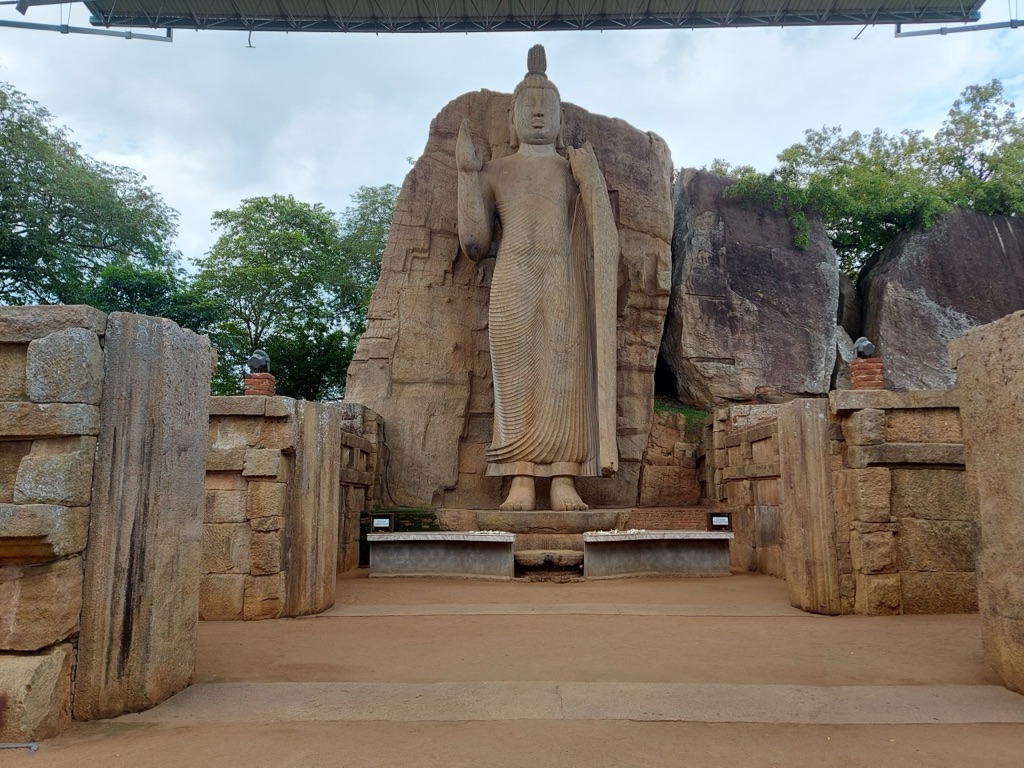The Avukana Buddha Statue stands as a magnificent example of ancient Sri Lankan stone sculpture. Carved out of a granite rock face during the 5th century AD, this statue reaches a height of approximately 40 feet, making it one of the tallest ancient Buddha statues in the world. It depicts a standing Buddha in the asisa mudra, a gesture of blessing or instruction. The statue’s precise carving and well-preserved details offer a glimpse into the skill of the artisans of the time. The Avukana Buddha is a significant symbol of the cultural and religious history of Sri Lanka and continues to be a site of pilgrimage for Buddhists from around the world.
Get your dose of History via Email
Historical Background of The Avukana Buddha Statue
The Avukana Buddha Statue was carved during the reign of King Dhatusena, around the 5th century AD. It stands near the Kala Wewa reservoir, an area rich in historical significance. The discovery of the statue is not well-documented, but it has been a revered site for centuries. The creator of this masterpiece remains unknown, though some attribute it to a competition between a master and a pupil. The statue has witnessed the ebb and flow of kingdoms in Sri Lanka but has remained a constant spiritual beacon.
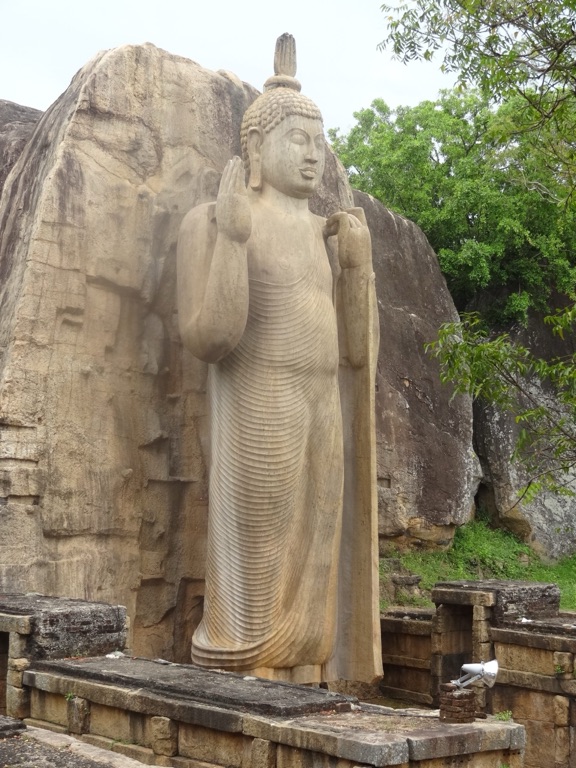
King Dhatusena, who ruled from 455 to 473 AD, is often linked to the statue’s creation. He was a patron of Buddhism and is also known for his construction of the Kala Wewa. The Avukana Buddha Statue, therefore, is thought to be a part of his legacy. The statue has not been the scene of any major historical events but has been a continuous place of worship. Over the centuries, it has withstood the elements, including attempts at structural reinforcement.
There is no record of the statue being inhabited or used for residential purposes. Its purpose has always been religious. The Avukana Buddha has stood as a silent witness to the changing landscape and the various kingdoms that rose and fell in Sri Lanka. It has been a source of inspiration and devotion, drawing pilgrims and visitors to admire its grandeur and craftsmanship.
The statue has undergone several conservation efforts to preserve its integrity. The Sri Lankan Department of Archaeology has taken steps to maintain the site and ensure its survival for future generations. Despite these efforts, the Avukana Buddha Statue has largely retained its original form, a testament to the skill of its creators.
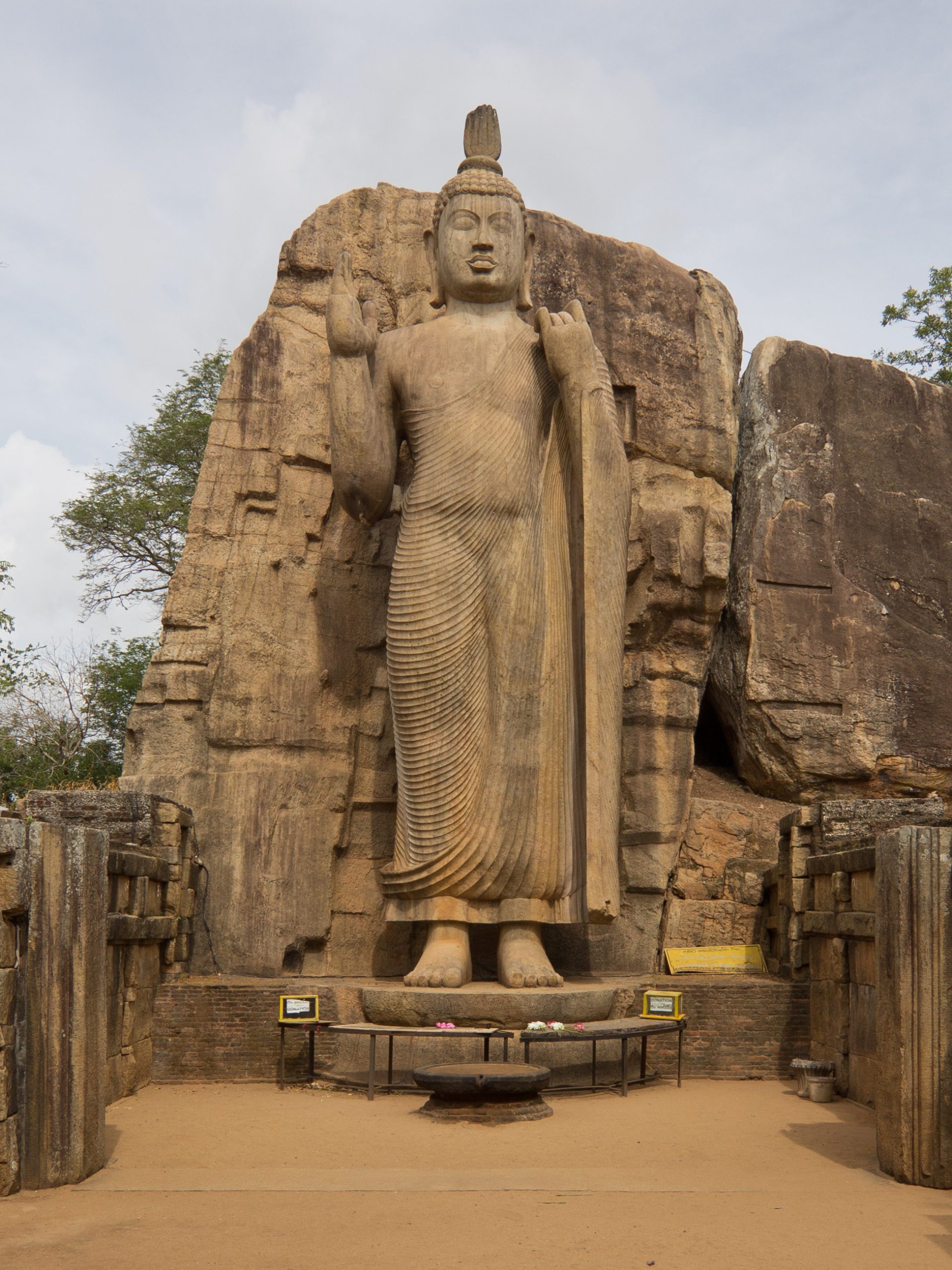
While the Avukana Buddha Statue has not been the center of any significant historical battles or events, its importance lies in its cultural and religious value. It remains a potent symbol of the island’s Buddhist heritage and continues to be an important site for both local and international Buddhists, embodying the island’s long history of Buddhist art and architecture.
About The Avukana Buddha Statue
The Avukana Buddha Statue is a towering figure carved out of a single granite rock face. It stands at an impressive height of around 40 feet, dominating the surrounding landscape. The statue represents the Buddha in a standing position, with his right hand raised in the asisa mudra. This gesture is symbolic of blessing and instruction, fitting for a figure meant to inspire and guide the faithful.
The craftsmanship of the Avukana Buddha Statue is remarkable. The intricate details of the Buddha’s robe, pleated skillfully, and the serene expression on the face reflect the high level of artistry achieved by the sculptors. The statue’s creators used chisels and hammers to carve the figure directly from the rock, a technique that required precision and patience.
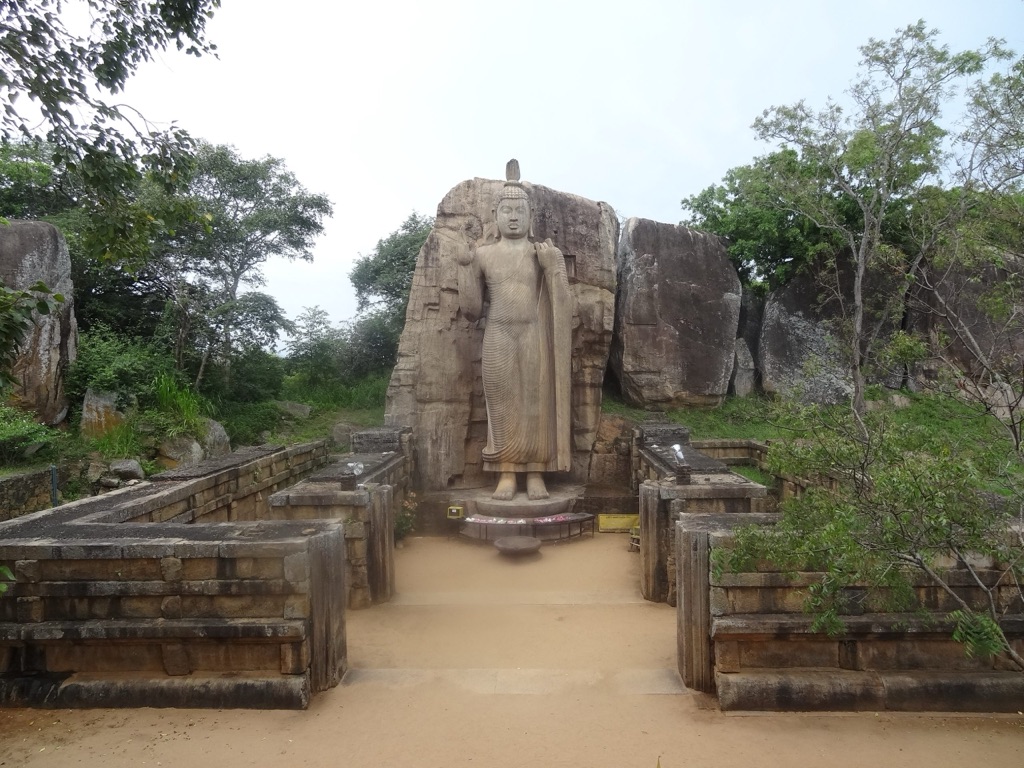
The choice of granite as the medium for the Avukana Buddha Statue was significant. Granite is a durable material, which has contributed to the statue’s preservation over the centuries. The rock’s hardness would have posed a challenge to the sculptors, yet they managed to create a work with delicate details and a smooth finish, showcasing their mastery over stone carving.
Architectural highlights of the statue include the lotus pedestal upon which the Buddha stands, symbolizing purity and enlightenment. The halo around the Buddha’s head, although partially broken, adds to the statue’s spiritual aura. The overall posture and execution of the statue are in line with the style of the period, reflecting the influence of the Gupta style of Indian art.
The Avukana Buddha Statue’s construction method and artistic style have made it an important subject of study for historians and archaeologists. Its well-preserved state offers valuable insights into the techniques and aesthetic preferences of the time. The statue is not only a religious icon but also a cultural treasure that speaks volumes about the history of Sri Lankan art.
Theories and Interpretations
Several theories surround the Avukana Buddha Statue, particularly regarding its creation and symbolism. One popular belief is that it was the result of a competition between a master and a pupil, each carving a statue from a single rock face. The Avukana Buddha is said to be the master’s work, while the similar but less refined Sasseruwa Buddha is attributed to the pupil.
The statue’s purpose has been interpreted as a religious monument meant to inspire and instruct. Its presence near the Kala Wewa reservoir suggests a connection between the spiritual and the practical, as the reservoir was a vital source of water for the region. The Avukana Buddha may have served as a guardian figure for the nearby communities.
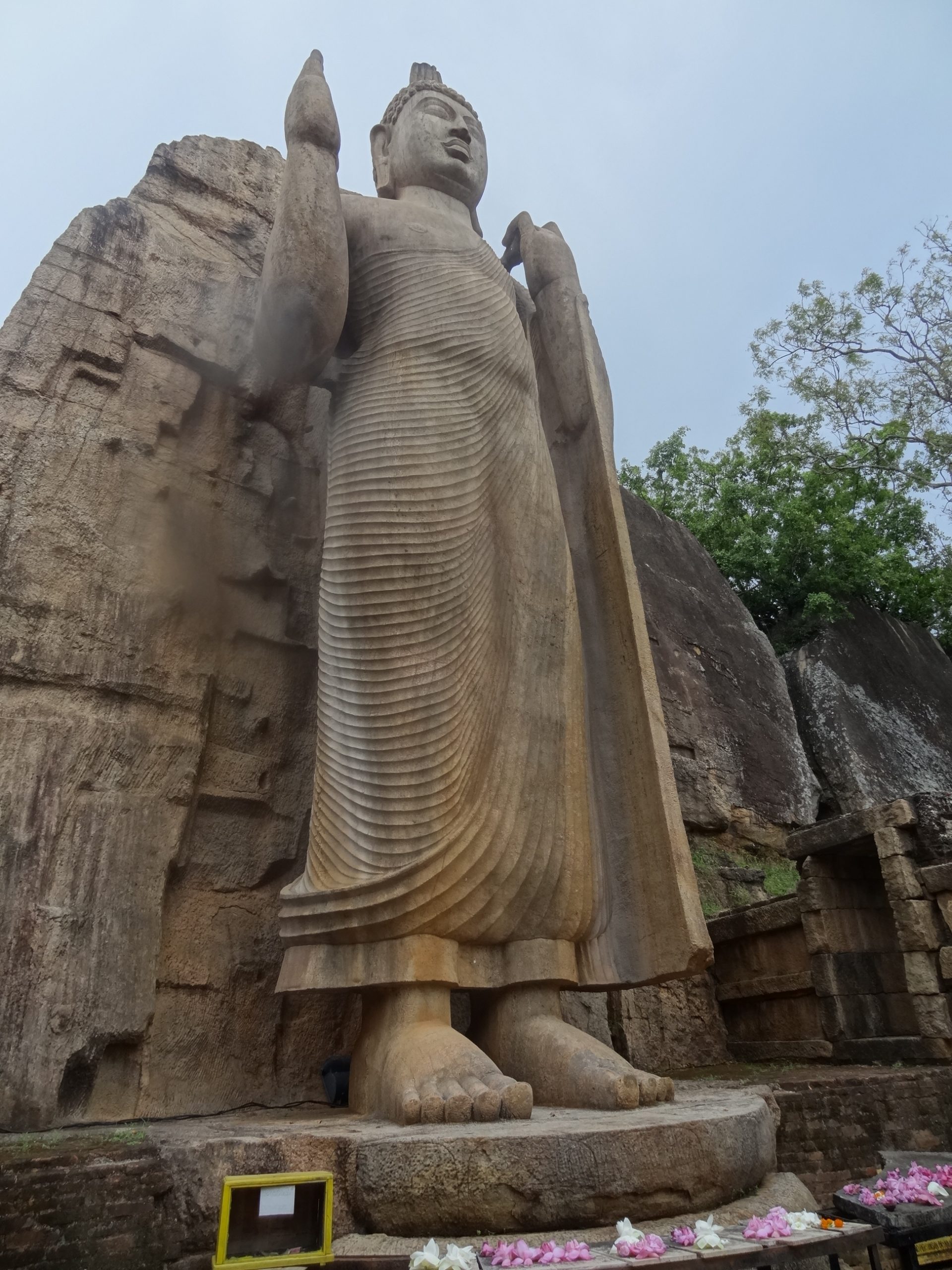
Mysteries about the statue include the identity of its creators and the exact reasons for its construction. While it is linked to King Dhatusena, the individual sculptors remain anonymous. The statue’s precise carving techniques have led some to speculate about the existence of advanced tools and methods during the period.
Historical records provide limited information about the Avukana Buddha, leaving much to interpretation. The statue’s style and iconography have been matched to other known works from the same era, helping to date it to the 5th century AD. However, the lack of written documentation means that some aspects of its history are based on educated guesses rather than concrete evidence.
Dating of the Avukana Buddha Statue has been carried out primarily through stylistic analysis. The features of the statue are consistent with other known works from the Anuradhapura period. While no specific scientific dating methods like carbon dating have been applied to the statue, its association with King Dhatusena’s reign provides a rough chronological framework.
At a glance
- Country: Sri Lanka
- Civilization: Sinhalese Kingdom
- Age: 5th century AD

